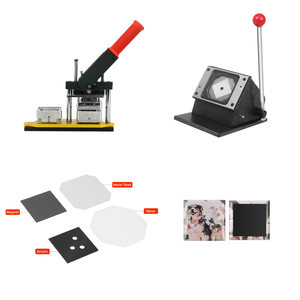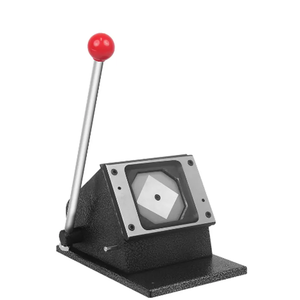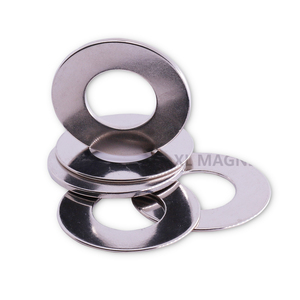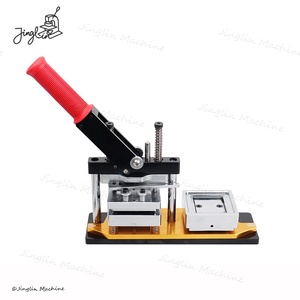
All categories
Featured selections
Trade Assurance
Buyer Central
Help Center
Get the app
Become a supplier

(1895 products available)






































The types of permanent magnet making machines are categorized based on their processes, materials, and structures. Each category has different features, such advantages and disadvantages. Therefore, it is necessary to choose the suitable type of machine for the specific requirements of the task.
Press machine
A magnet press machine is a kind of equipment used to shape and solidify permanent magnets. This machine works by pressing magnet powder into desired shapes. There are different types of presses, such as uniaxial presses and isostatic presses. They can be used to make various permanent magnets. The press machine applies pressure to the magnetic material, resulting in a shaped magnet that is used in many industries, such as automotive and aerospace.
Sintering furnace
A sintering furnace is used to make bonded magnets. First, a mixture of magnetic powders is placed in a mold and then heated inside the furnace. The heat causes the particles to stick together without melting the material completely. This process improves the magnet's strength and its magnetic properties. Sintering furnaces are widely used to produce ferrite and neodymium magnets.
Injection molding machine
Injection molding machines are used for bonded magnets. In this process, magnetic powder is mixed with polymer plastic material. The mixture is then injected into a mold through a screw injector. When it cools down inside the mold, it takes on the shape of the magnet. This method is suitable for producing complex shapes and large quantities of magnets. It is commonly used for making samarium-cobalt magnets.
Coating machine
Coating machines apply protective coatings to permanent magnets. Magnets, especially those made from neodymium iron boron, are coated with materials like epoxy, nickel, or zinc to protect them from corrosion and damage. The coating machine applies a thin layer uniformly over the magnet surface, ensuring long-lasting performance in humid or corrosive environments. These machines use processes such as electroplating and spray coating.
Grinding machine
A grinding machine is used to shape and finish the surface of permanent magnets. After making the rough-shaped magnets, this machine grinds them into the desired precise shape. It also improves the surface quality of the magnets. Grinding machines are essential for achieving accurate dimensions and smooth surfaces, which are critical in applications where precise fitting and high-performance are required.
Testing machine
Testing machines are used to check the quality and performance of permanent magnets. These machines measure a magnet's strength, durability, and other properties to ensure they meet the required standards. There are different types of testing machines, such as pull test machines and gaussmeters. They are used for various tests on permanent magnets. Using a testing machine in the production process is crucial to ensuring the reliability and performance of the magnets.
There are different designs of permanent magnet making machines. Each of these machines has specific features that suit certain industrial applications. Some are small and simple for basic tasks, while others are large and advanced for specialized tasks.
Rotary die press machine
The rotary die permanent magnet machine is a popular choice in industry. It has a cylindrical die that rotates to shape materials into permanent magnets. This machine is great for producing complex parts like gears and seals. Its high precision and efficiency reduce waste and production costs. It can also make magnets from different materials, making them useful in many applications, including electric motors, sensors, and medical devices. The machine is built to last and needs little maintenance, making it a cost-effective option for businesses.
Ball mill machine
A ball mill machine is used to make permanent magnets. It grinds materials into a fine powder that forms the magnet. The machine rotates large balls in a cylindrical container to crush and mix the materials. It is suitable for making neodymium magnets. Ball mill machines are used in industries that need strong magnets, such as electric vehicles, renewable energy systems, and consumer electronics. They are also used in research labs to create and study new magnet materials. Using a ball mill machine is a cost-effective way to produce permanent magnets on a large scale.
Compression molding machine
A compression molding machine can create permanent magnets. It uses heat and pressure to shape materials into magnets. This machine is suitable for making bonded magnets, which combine magnets with plastic or resin. It can produce complex shapes like rings, discs, and blocks, which are useful in motors, generators, and medical devices. The compression molding machine is efficient and reduces waste. It can work continuously and is cost-effective for mass production of permanent magnets.
Injection molding machine
An injection molding machine can make permanent magnets. It is suitable for making bonded magnets. The machine mixes magnet powder with plastic and injects it into a mold to form the desired shape. This process is fast and produces little waste. The injection molding machine is good for making complex shapes for many uses, including motors, sensors, and medical devices. It can work continuously, making it cost-effective for mass production of permanent magnets.
The permanent magnet machine applies to diverse industries because of its ability to create strong permanent magnets. These machines are crucial in making specific magnet components.
Automotive Industry
The automotive industry utilizes permanent magnet machines to make magnets for electric vehicle motors, magnetic sensors, and actuators. These magnets improve vehicle performance and control.
Consumer Electronics
Permanent magnet machines are critical in the consumer electronics sector. They produce magnets used in headphones, speakers, hard drives, and other devices. The magnets enable compact design and high performance in electronic gadgets.
Renewable Energy Sector
The demand for permanent magnet generators and motors is increasing in wind turbines and electric vehicle applications within the renewable energy sector. This sector depends on permanent magnet machines to produce the required components.
Medical Equipment
Permanent magnets are crucial in MRI machines, magnetic implants, and other medical devices. The magnet-making machine creates the magnets that are crucial for accurate diagnosis and treatment in the medical field.
Aerospace Industry
The aerospace industry needs strong and heat-resistant magnets for aircraft, satellites, and other aerospace applications. Permanent magnet machines create magnets that meet the demanding requirements of the aerospace industry.
Industrial Automation
In robotics, sensors, and automated systems, the industrial automation sector depends on permanent magnets for precise control and positioning. The magnet making machine supplies the strong magnets needed for automation.
Telecommunication Equipment
Telecommunication systems depend on permanent magnets for signal processing and data transmission. The magnet machines supply the magnets needed for reliable communication.
For business buyers, choosing the right permanent magnet making machine is crucial. It ensures efficiency, quality, and cost-effectiveness. Here are some key factors to consider:
Purpose and Requirements:
Identify the specific purposes for which the machine will be used. Consider the types of permanent magnets required (e.g., neodymium, ferrite). Also, consider the desired scale of production and any specific quality standards that must be met.
Production Capacity:
Choose a machine with a capacity that matches the production needs. For example, consider the volume of magnets that need to be produced within a given timeframe. Think about the future as well. Opt for machines that allow for increased capacity without compromising quality.
Machine Technology and Features:
Look for machines that have advanced technologies and features. These should ensure precise and efficient magnet production. Features such as automated processes, digital controls, and advanced sensing systems can enhance productivity and reduce the risk of errors.
Material Compatibility:
Ensure that the machine can work with the materials used for permanent magnet production. Check if it can handle different types of magnetic powders or substrates. Also, ensure it can accommodate various bonding agents or coatings.
Quality and Reliability:
Choose a machine from a well-reputed manufacturer known for its quality and reliability. Consider the durability and robustness of the machine. Also, consider its performance track record and the quality of the components used. It helps ensure consistent and defect-free magnet production.
Ease of Use and Maintenance:
Look for user-friendly machines that are easy to operate and maintain. Consider the availability of training and support from the supplier. It is to ensure that operators can quickly learn to use the machine effectively. Also, ensure regular maintenance can be performed with minimal disruption to production.
Cost Considerations:
Evaluate the total cost of ownership (TCO) of the machine. Consider the initial purchase price, operating costs, maintenance expenses, and potential costs associated with upgrades. Strike a balance between cost and the value offered in terms of quality, performance, and features.
Supplier Support:
Consider the importance of supplier support when choosing a permanent magnet making machine. It is an important aspect. Opt for suppliers who provide excellent after-sales support. These can include installation, training, and maintenance services. Also, consider the availability of spare parts and the supplier's responsiveness to inquiries or concerns.
Q1: What are the trends in permanent magnet generator design?
A1: The trends are in improving the energy efficiency of the machines, miniaturization, and integration of smart technologies for the condition monitoring of the magnets.
Q2: How can the durability of magnets be enhanced?
A2: Using magnet coatings and selecting bonded magnets with enhanced durability to provide better resistance to various adverse factors.
Q3: What are the environmental considerations in permanent magnet making?
A3: The industry is shifting toward recycling old permanent magnets to recover rare earth elements and using sustainable and eco-friendly materials to reduce the carbon footprint.
Q4: What is the role of automation in the permanent magnet making machine cost?
A4: The automation of the machines reduces the costs of making permanent magnets by decreasing the cost of operational labor and improving the consistency of the magnets produced.
Q5: How can the machine's output be increased?
A5: The fusing of different technologies, such as using 3D printing to create permanent magnets and employing laser sintering, can help increase the machine's output.